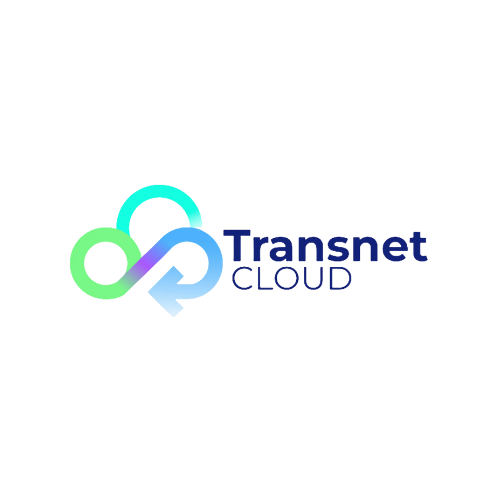Having the appropriate cloud budget is a top prerequisite before migrating to any cloud infrastructure. While cloud adoption promises agility, scalability, and long-term cost efficiency, these cloud benefits only materialize when you have a well-structured financial plan to facilitate seamless migration.
Too many businesses and enterprises jump in without a clear budget and end up incurring bills, surprise fees, and underused resources, draining funds every month.
Whether you run a growing startup, a government agency, a local enterprise, or a multinational company, building a smart cloud budget is how you turn cloud from a cost center into a growth driver. Here are six detailed steps to help you build a budget that works.
1. Understand What You’re Paying For
Before counting figures, you need complete visibility into what cloud services actually cost or the cost of the specific cloud services you need. The cloud pricing model is radically different from traditional IT procurement, where you buy fixed hardware and licenses upfront. Instead, the cloud operates on a consumption-based model (you pay only for what you use), but there are many moving parts.
Typical cloud cost categories include:
- Compute resources: Virtual machines, containers, and serverless functions. These are often billed per second or minute of usage, so even minor misconfigurations can spike costs.
- Storage services: Block storage for databases, object storage for files, backups, and snapshots. Charges often vary by storage class (e.g., standard vs. archive) and data retrieval frequency.
- Networking: Data transfers between regions, content delivery networks (CDNs), load balancers, and VPNs. Networking costs are frequently underestimated but can become significant at scale.
- Licensing and support: Managed services, security software, monitoring tools, and technical support plans can add up quickly if not tracked.
Pro tip: Conduct a cloud readiness assessment using Transnet Cloud’s cost simulation tools to forecast expected workloads and expenses before you migrate.
2. Watch Out for Hidden and Variable Fees

Cloud pricing looks simple on paper, but hidden fees often cause budget overruns. These charges don’t appear until after deployment, making them easy to overlook during planning.
Common hidden cost amplifiers include:
- Data egress fees: Uploading data into the cloud is often free or cheap, but pulling data out (to users, apps, or other clouds) can be costly. Heavy data movement between regions or providers will amplify this cost.
- Idle or underused resources: Servers and storage volumes that run continuously but serve little traffic still incur full charges.
- Overprovisioned instances: Selecting large instance types for “just in case” locks you into paying for unused capacity.
- Shadow IT: Teams launching cloud resources outside official oversight can create unmonitored costs that never appear in planned budgets.
Pro tip: Mitigate hidden costs by enabling automated usage alerts, enforcing resource tagging, and periodically auditing idle workloads. You can also use cloud assessment tools to get a clear breakdown of expected workloads and costs upfront.
3. Plan for Scalability Without Overcommitting
One of the greatest benefits of cloud is on-demand scalability, but many businesses squander this advantage by committing to maximum capacity from day one. You can start small and go big or start big and go small as your demands change. Likewise, it is important to make your budget based on business objectives. You can:
- Start small and scale gradually as usage grows
- Use auto-scaling tools to add resources only when needed.
- Choose pay-as-you-go pricing for unpredictable workloads.
- Lock in reserved instances or savings plans only for steady, long-term workloads.
- Separate your environment into production, staging, and development, and allocate budget caps for each to prevent “test” environments from draining production funds.
PS: With Transnet Cloud, businesses can design scalable architectures on Amazon Web Services (AWS) that flex seamlessly while staying cost-efficient.
4. Set Clear Cloud Budget Limits and Track Them
Budgeting is not a one-time setup; it must be actively managed as workloads grow. Without continuous monitoring, costs can spike silently. You can:
- Create departmental or project-based budget allocations so each team is accountable for its usage.
- Set budget alerts that notify stakeholders as spending approaches thresholds.
- Use cloud cost dashboards to visualize spending by service, region, and team.
- Review costs monthly or quarterly and compare them against business KPIs (revenue per workload, cost per transaction, etc.).
Transnet Cloud offers centralized dashboards so you can see your full AWS spend in one place, helping you spot anomalies before they become crises.
5. Build a Cost-Aware Culture Across Your Organization

Even the best tools won’t control costs without the right organizational mindset. A cost-aware culture ensures everyone who touches cloud resources understands their financial impact.
Ways to build this culture:
- Educate developers and engineers on the cost implications of their design choices.
- Create policies for spinning up and shutting down environments, especially for testing and staging.
- Make every team responsible for their portion of cloud costs
- Incentivize teams to meet efficiency benchmarks — for example, rewarding projects that reduce costs while improving performance.
Even simple actions, like shutting down unused test environments, add up to huge savings. Over time, this approach shifts budgeting from a finance-only responsibility to a shared operational discipline.
6. Shift From Seeing Cloud Budget as Cost-Cutting to ROI Thinking
Here’s where most cloud budgets go wrong: leaders approach cloud budgets only as an expense to minimize. That mindset leads to underinvestment, brittle systems, and missed growth opportunities.
Instead of asking, “How much can we cut from the budget?” start asking, “How can we make our cloud budget work more effectively for the business?”
This shift reframes your budget around cloud ROI—a way to connect your cloud investments to real business value, rather than just cost. It’s about seeing spend not as something to fear, but as a tool to drive outcomes like faster product launches, improved reliability, and greater customer satisfaction.
It also means understanding when higher spending is justified. For example, if you’re rolling out a major platform upgrade, you might temporarily double certain costs to support the transition. That kind of spending isn’t waste; it’s a strategic investment that can pay for itself in increased efficiency, revenue, or market share down the line.
Once you adopt this ROI mindset, every other budgeting decision becomes clearer.
Let Your Cloud Budget Work For You
Cloud migration without budgeting is like sailing without a compass. You may move fast, but you’ll drift off course. A well-designed cloud budget lets you confidently scale your business while protecting your bottom line. With the right planning, monitoring, and support, you can keep costs predictable while scaling effortlessly.
Also note that a well-built cloud budget isn’t about squeezing every penny but ensuring every penny works harder for your business.With support from Transnet Cloud, you can:
- Forecast and control cloud costs before migration
- Eliminate hidden charges like egress and idle compute
- Implement tools to track, report, and continuously optimize spend
The cloud should fuel your growth, not drain your budget.
Contact Transnet Cloud today to build a budget that works for your business, not against it.











